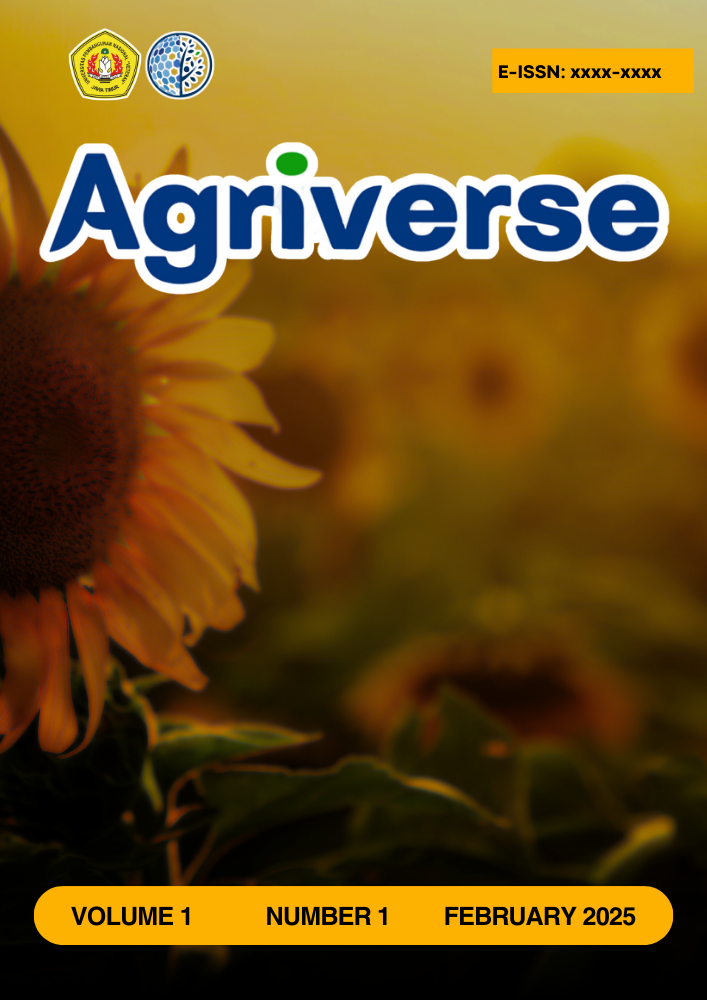Pest and Disease Challenges in Oil Palm (Elaeis guineensis Jacq) Seedling in Sukamara, Central Borneo
Keywords:
Kelapa Sawit, Hama Potensial, Culvularia, Intensitas, FrekuensiAbstract
Oil palm (Elaeis guineensis Jacq) is one of Indonesia’s leading agricultural commodities, with high-quality seedlings playing a critical role in optimizing crude palm oil (CPO) production. However, oil palm cultivation is highly susceptible to various pests and diseases, including Curvularia sp., which poses a significant threat to nursery production. Despite the economic importance of oil palm, studies on the identification of major pests and diseases affecting both mature plants and seedlings in large-scale plantations remain limited. This study aims to identify the potential pests and diseases affecting mature oil palm plants and seedlings in the plantation area of, Sukamara Regency, Borneo. Field observations were conducted in the oil palm nursery and production area to assess pest infestations and disease occurrences. The frequency and intensity of Curvularia sp. infection were systematically recorded and analyzed. The primary pests identified include the rhinoceros beetle (Oryctes rhinoceros), armyworm (Spodoptera sp.), grasshoppers, and bagworms (Metisa plana). The presence of Curvularia sp. was observed with an infection frequency of 4.64% and an intensity of 2.09%, classified as mild damage. The relatively low incidence of this disease is attributed to environmental conditions, cultural practices, and existing pest and disease management strategies. A comprehensive understanding of the pest and disease spectrum in oil palm plantations is essential for developing effective control strategies. Strengthening integrated pest and disease management practices is crucial to ensuring seedling quality and sustaining optimal CPO production.Downloads
Published
2025-03-17
How to Cite
Fernando Simanjuntak, W. ., Mahendra Kusuma, R., Wiyatiningsih, S., & Zulperi, D. (2025). Pest and Disease Challenges in Oil Palm (Elaeis guineensis Jacq) Seedling in Sukamara, Central Borneo. Agriverse, 1(1), 12–22. Retrieved from https://agriverse.upnjatim.ac.id/index.php/agriverse/article/view/3
Issue
Section
Articles
License
Copyright (c) 2025 Agriverse

This work is licensed under a Creative Commons Attribution 4.0 International License.









